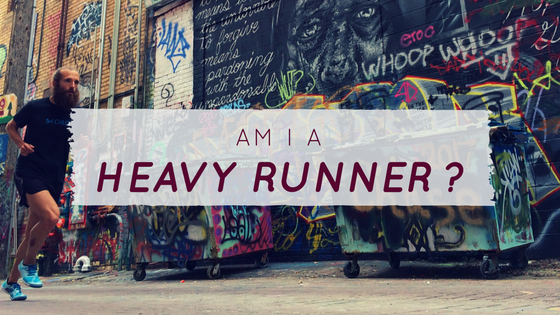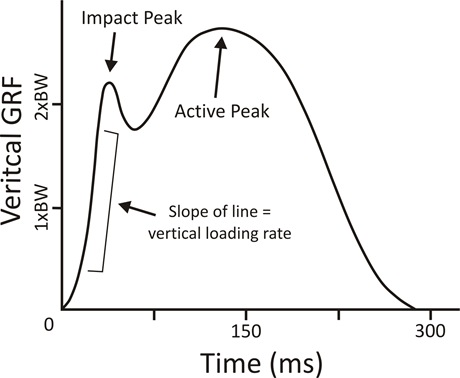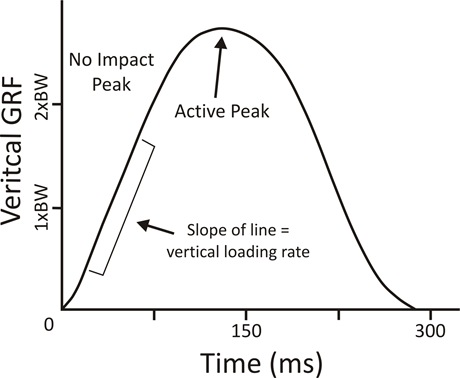
Do you feel like a heavy runner? Would you use words like “thudder” or “stomper” to describe your running style? Find out where this comes from and what you can do about it.
Try this.
Stand on the bottom step of the stairs. Jump off. How did that go? Not too bad, right?
Okay, now, try jumping off the step again but as you land do not bend your knees. You made more noise, right? It might even have hurt a little bit. Now, do it again, but this time land on your heels.
Were you actually able to do it? I can’t really bring myself to do this. Trying to land on my heels from the bottom step with straight knees just feels so wrong. I end up contorting as I land to try and reduce some of the shock and I still make an incredible thud as I come down.
This is what is happening for many runners. They use terms like “heavy runner”, “thudder” or “stomper” to describe their running form. This has nothing to do with your weight, and it has everything to do with some scientific sounding terms like Ground Reaction Force and Vertical Loading Rate. They sound scary, but bear with me for a few minutes and I’ll show you how you can learn to glide gently along as you run. You will discard the label of the “heavy runner” and become Ninja Quiet.
The Physics of a Heavy Runner
With each stride we take as we run, we will hit the ground with a force roughly equivalent to three times our bodyweight. This is known as the Vertical Loading Rate. As that occurs, an equal and opposite force comes back up through our leg. That force is called the Ground Reaction Force.
Each time we land a stride as we run, we must absorb the ground reaction force. If we absorb that ground reaction force very quickly we will make a loud thud as we take each step. If we absorb it more slowly, we’ll run along like a ninja, barely making a sound.
You can see a graphical representation of what I’m referring to here. The vertical axis (Y) shows the amount of force. The horizontal axis (X) shows time. The line on the graph shows how quickly the force is being absorbed or the Vertical Loading Rate.

In this first graph. The line is very steep. This shows that the force was absorbed very quickly. This would be what happens if we jump off a step and land on our heels without bending our knees. It’s also what is happening in “thudder” runners who make a lot of noise as they land, making them feel like a “heavy runner”.

In this second graph. The line is not so steep. The force was absorbed much more slowly. This is what happens when we jump down from a step, land on our toes and bend at the knees. It’s also what is happening with runners who land ninja quiet as they glide along.
Keeping it Simple
Terms like ground reaction force and vertical loading rate are all well and good for research, but can be confusing in practice. So I’m going to simplify things at this point and just call it impact.
- Noisy landing = high vertical loading rate = high impact
- Quiet landing = low vertical loading rate = low impact
So if landing noisy means we have a high impact, why do we care? The most important reason is that high impact high been strongly correlated with more running injuries (Davis 2015).
When I’m looking at runner’s technique in the clinic, number one on my list of things to address is impact. If the impact is high, it’s the first thing we are going to work on. You can’t smash your next PR or run your first marathon if you are sidelined with a stress fracture.
Am I a Heavy Runner?
Well, do you feel like you are a “heavy runner”? Do you feel like a “thudder” or a “stomper”? I’d say 50% of the time runners already know they are thudding when they come to see me. So if you think you’re a heavy runner, you probably are.
Otherwise, just jump on a treadmill in a quiet room. If you feel like you’re bothering the neighbours, you’re a heavy runner.
What can I do about it?
It’s best to do this in a quiet room with a treadmill. This way, you can get instant feedback on how well you have reduced your impact. You’ll know it’s better the quieter you run. We’re going for ninja quiet here, remember?
There are two cues that I have found particularly helpful for reducing impact. Try them one at a time for 2-3 minutes each. Choose the one that reduces your impact the most but also feels somewhat comfortable.
The first cue is obvious, just try and “run quietly”. See how that goes for a couple of minutes, then run normally for a little while before trying the next cue. Next up is “pretend you are running on hot coals”. See how that goes for a couple of minutes, then run normally again for a little while. I also suggest taking your shoes off and running barefoot for a while. If that reduces your impact significantly it may be worth introducing some barefoot running to improve your technique.
Trying out these cues at home is a great way to work on reducing your impact and move from being a “heavy runner” to “ninja quiet”. That being said, there may be other things about your technique that could further improve your performance and reduce your injury risk.
Check